|
Matthew Mitchell operates Mitchell Flying Service, an agricultural aviation operator based out of Perry Municipal Airport (F22) in Oklahoma. Mitchell has been flying since 1990 and puts about 250 to 300 hours per year on his Grumman Ag-Cat, for which he has two TPE-331 engines that he rotates as needed. The rigors of agricultural aviation have shown Mitchell the value of keeping the prop on his Ag-Cat in good balance, which is done using a DynaVibe GX2. Anytime something changes with the prop, such as maintenance or mounting the prop after an engine change, Mitchell likes to have a dynamic balancing performed. “It is essential to have the prop balanced,” states Mitchell. Doing so eliminates vibration caused by propeller assembly imbalance, which reduces wear on the engine, airframe and instruments. Dynamically balancing a propeller is an excellent preventative maintenance approach that can help eliminate future engine problems that might otherwise ground an operator. Another significant benefit to using the DynaVibe GX2 is the vibration survey capability it provides. “DynaVibe checks other vibration ranges besides the propeller,” says Mitchell. “It’s a good way to keep an eye on the engine, because you may not feel a vibration that DynaVibe can detect.” Anytime Mitchell puts an engine together, he likes to have a baseline vibration analysis done. This allows him to do trend monitoring on the engine with DynaVibe to monitor the health of that engine while it is in use. Regular vibrations surveys can help operators like Mitchell to identify problems before they cause a shutdown or result in a failure.
The DynaVibe GX2 is a dynamic prop balancer and vibration analyzer that can improve performance and maintain engine health. To get your own DynaVibe GX2, visit the RPX Technologies online store, enter your email address below or simply call us at: 405.896.0026. KSFB Aircraft Maintenance Center is located in Seminole County, Florida, and is operated by Chris and Lisa Reilly. Chris is an A&P technician with Inspection Authorization. He is also a private pilot and aircraft owner. Included among the many services he provides to his clients is dynamic propeller balancing, which he uses a DynaVibe GX2 to perform. Chris recently dynamically balanced a client’s Cozy Mk IV with a Lycoming IO-360 (fuel injected) engine and a Sensenich wooden cruise prop. His client was pleased with the outcome and sent Chris some feedback email message to share his thoughts: “After finishing the installation of Belleville washers my prop (ask me why), I suspected those huge, new steel lumps under each prop bolt would play havoc with whatever primitive balance I’d achieved during the build, so today I had my local A&P do a dynamic balance. Can’t believe the results! First run showed it was a long way from acceptable; 0.6 IPS. The second run we homed in on a better solution; 0.19 IPS. 3rd run was spot on; 0.01 IPS. Compare that with the scale on the LHS [DynaVibe balancing report] below which calls 0.05 'Excellent'. The 'feel' of the plane, just sitting on the ground in the driver’s seat was remarkably different, too. I’ll put the cowls back on and fly it at the weekend, but I’m expecting a gross improvement. I’ll report results. Most engineering exercises are a compromise. With this result, I drove home with a big smile on my face! If you haven’t already done this [balance your prop], give yourself a Christmas present!” DynaVibe gives pilots a smoother, safer flying experience, and provides maintenance centers with a new source of revenue. To get your own DynaVibe system, visit the RPX Technologies online store, enter your email address below or simply call us at: 405.896.0026.
Reynolds Aviation provides aerial patrols for pipelines, power lines or any asset that has federal, state, or local reporting requirements. When on patrol, Reynolds’ highly trained pilots provide security, take aerial photos, respond to emergencies and look for encroachments, leaks, pipeline threats, erosions and construction on right of way assets. Reynolds uses DynaVibe to help keep its fleet of Cessna 172s flying smoothly while lowering costs of maintenance and operation.
Dennis Barker, president of Reynolds Aviation, has experience with racing engines and therefore knows what damage vibrations can do to an airplane’s engine, its bearings and instruments: “Vibration can destroy those instruments, so balance is huge!” Barker’s partner had previously used a helicopter balancing solution, giving him some frame of reference on the cost of a prop balancer. When the Aero Performance representative that serves Reynolds Aviation came calling to discuss DynaVibe, Barker expected a pitch for a much more expensive solution costing in the neighborhood of $10,000. Instead, he learned that he could purchase a DynaVibe Classic and own a dynamic propeller balancing system for less than $2,000, and did so. Some of the airplanes in the Reynolds fleet were showing signs of fatigue caused by vibration: cracked baffling, new lights that would burn out or instruments that would fail. Barker knew that eliminating propeller imbalance would stop the damaging vibrations. “Some of the engines vibrated so badly that we couldn’t even read ‘Lycoming’ that was stamped on the engine. Now they’re really smooth.“ The prop imbalance on one airplane measured close to 1 Inches Per Second (IPS). Using DynaVibe, the Reynolds maintenance team was able to balance all the airplanes in the fleet to between .01 and .07 IPS. The Reynolds pilots often fly long days, spending hours in the air, so eliminating vibration from propeller imbalance not only reduces fatigue on the airplane, but on the pilots as well. “The pilots were thrilled with how the yoke feels after we balance an airplane,” Barker said. “They noticed a difference immediately.” Barker is confident that using DynaVibe to keep the fleet in balance will also pay dividends in terms of maintenance and operational costs. “The big enemy of operations like ours is what it costs to keep planes in the air. Long term, we don’t fully know what the maintenance benefits are, but even cutting these costs by just 10 percent would pay for the DynaVibe system three times over.” An unexpected bonus from using DynaVibe is the information provided by the photo tachometer, making it possible to determine how accurate the airplane tachometer is. “An incorrect tach reading can cause us to fly a plane at a cruise RPM that’s actually too high, which can damage the engine,” Barker concludes. “DynaVibe also tells us if the tach is off. It’s a phenomenal product.” To learn about using DynaVibe to dynamically balance propellers and rotors, enter your email address below, visit the RPX Technologies website, or call: 405.896.0026. Our new infographic shows how mechanics, repair stations, shops and service centers can make more money by adding prop balancing to their service mix with DynaVibe:
Vibrations Steal Energy There are many benefits to dynamically balancing the prop assembly and removing vibrations associated with propeller imbalance. Often talked about benefits include smoother flying with less wear on the engine, instruments and airframe. These benefits have enormous value, as they reduce fatigue on the plane, pilot and passengers, while extending the life the airplane. They are reason enough to keep the prop assembly in good balance, all the time. Another benefit of dynamic prop balancing is performance. When an imbalance introduces a vibration, energy is spent shaking the airplane instead of moving it. With a finite amount of horsepower available to propel the airplane, a vibration uses some of it in a destructive way, leaving less available for propulsion. The percentage of horsepower lost to vibration may seem small. Look at it this way: suppose a propeller imbalance is costing 2 percent of an engine’s horsepower. This 2 percent is going into shaking the airplane. If that airplane has a 200 HP engine, in this scenario 4 HP is lost due to vibration. To provide some perspective, this loss is the equivalent of hooking up a lawn mower engine to the airplane’s crankshaft to do nothing more than shake the airplane! That’s how much energy a propeller imbalance can direct into the crankshaft bearings and the rest of the airplane. Fortunately, it’s not difficult to recapture this “lost” horsepower. Dynamically balancing the prop assembly allows most or all of the horsepower lost to vibration to once again go toward flying the airplane. Using the DynaVibe GX2, you can easily determine if a prop is out of balance, and also get a solution for how much weight to add, and where to add it to achieve good balance. To learn about using DynaVibe to dynamically balance propellers call us at 405.896.0026, or enter your email address or phone number using "Contact Us" at the bottom of this page and we'll contact you!
Several teams using DynaVibe to get peak performance Qualifying for the National Championship Air Races in Reno, Nevada began this week, and DynaVibe is part of the strategy to win for teams in three of the six classes. Vito Wypraechtiger flying the Scarlet Screamer is currently the second-fastest qualifier in the Formula One class. In the Biplane class, Tom Aberle flying the Phantom set a new world record of 284.454 mph, breaking the previous record of 274.091 mph set in 2014. Steve Hinton flying Voodoo, a modified P-51D Mustang and the 2014 Unlimited gold champion at Reno, is currently the top qualifier in the Unlimited class. “The DynaVibe helped us win the national championship air race in Reno,” said Bob Button, owner of Voodoo Air Racing speaking about the 2014 win. Each of these racing teams is using DynaVibe to help their aircraft achieve peak performance. By dynamically balancing the propeller assembly, owners can recapture RPMs lost due to vibration. Testimonials from DynaVibe users speak to gaining RPMs on the top end after dynamically balancing their props.
Vibration uses horsepower, so when a vibration is eliminated, that horsepower can work to move the airplane faster instead of shaking it. Consider this scenario: a vibration that was costing 2 percent of the engine's horsepower to shake the airplane is recaptured through the balancing process. To put this into perspective, it is roughly the equivalent of hooking up a lawn mower engine to the crankshaft to do nothing more than shake the airplane! A prop imbalance can direct a significant amount of energy into the crankshaft bearings and the rest of the airplane. After balancing, that horsepower is no longer "lost" due to vibration, but available to help win races. In the air racing world, 2 percent can be the margin between winning and losing. The benefits of a dynamically balanced prop assembly are not limited to racing aircraft. Any airplane can experience smoother, safer flying with less wear on the airframe, engine and instruments by balancing the propeller. To keep up with the action in Reno, visit the race reports website. To learn about using DynaVibe to dynamically balance propellers and analyze other vibration sources, enter your email address below, visit the RPX Technologies website, or call: 405.896.0026. The RPX Technologies team recently had the opportunity to use the DynaVibe GX2 system to balance an Antonov 2 - "Annie" - the world's largest biplane. Our latest video shares our experience with the AN-2, showing how the dynamic propeller balancing process works. To learn more about DynaVibe, dynamic prop balancing or vibration analysis, enter your email below:
DynaVibe Balances the World’s Fastest Four-Cylinder Airplane Editor’s Note: Special thanks to Craig Catto, founder of Catto Propellers, for providing key input and photographs for this story. The Anequim Project, a group of students and professors from Brazil's Universidade Federal de Minas Gerais (UFMG), has built and flown the world’s fastest four-cylinder airplane. Anequim comes from the Brazilian name for the shortfin Mako, the fastest shark in the seas, a fitting namesake for the airplane that gobbled up title to five world records during recent flights in August: multiple speed records over various distances as well as a new fastest time-to-climb record. Here are the world records the Anequim Project now owns: 1. Speed over 3 km with restricted altitude
2. Speed over 15 km
3. Speed over 100 km closed course
4. Speed over 500 km closed course
5. Time to climb up to 3,000 meters
Powering Anequim is a four-cylinder Lycoming IO-360 modified by Sky Dynamics, connected to a custom propeller built by legendary prop designer Craig Catto, whose propellers have helped set numerous world records. Craig has used the DynaVibe Classic propeller balancing system for several years. At Airventure 2015 in Oshkosh, Craig connected with RPX Technologies co-founder and engineer Matthew Dock, who explained the benefits of the second-generation DynaVibe GX2. “I thought this would be the perfect time to upgrade to the GX2 unit with the upcoming Anequim world record speed and time to climb record attempts in Brazil,” said Catto. “I was able to acquire one of the new GX2 units the week before leaving to support the Anequim Team on their record attempts.” Catto and his team made a total of 8 propellers for the Anequim Project. Prior to balancing the Anequim, the pilot reported that the engine propeller systems were operating smoothly. “We really did not know how ‘smooth’ was smooth,” said Catto. “So we performed a simple propeller vibration analysis and found that we could improve the balance by simply removing one of the mass balance washers that was attached to the fly wheel. We removed one An970-3 washer and brought the balance into the ‘excellent’ range. We felt this was important especially on the 500km record attempt, where the 11/1 compression electronic ignition engine built by Sky Dynamics was going to be operating at full throttle for what would be right at one hour.” Catto was pleased with how easy it was to dynamically balance Anequim’s propeller, removing it as a vibration source so that any other change in engine circumstances during the record attempts would become more evident to the pilot. “The new GX2 will not only perform a simple propeller dynamic balance, but even a full spectrum vibration analysis. With the new unit, Catto Propellers can now perform these services for its customers and others at the facility at KJAQ. We are happy to say that DynaVibe was a part of our wonderful experience taking part of the world records set by the Anequim Team.”
DynaVibe can help your airplane achieve record-setting performance too! To learn how, enter your email address below or contact RPX Technologies at: 405.896.0026. Dynamic Prop Balancing Delivers Smoother Flying. Background Vic Syracuse owns and operates Base Leg Aviation out of Mallards Landing Airport (GA04) in Locust Grove, Georgia. Base Leg Aviation serves the sport aviation community, providing DAR Services in a seven-state area, avionics and instrument panel service, inspections, test flights, ferry flights and other services. Vic has over 38 years of aviation experience, and he has built 10 award-winning aircraft. An EAA Technical Counselor, he also writes the monthly “Checkpoints” column for Kitplanes Magazine. With over 8,000 hours of total time, Vic has a wealth of experience and wisdom to offer his customers.
Dynamic Prop Balancing Vic purchased a DynaVibe prop balancing system at the Sun ‘n Fun fly-in in April, 2015. He initially offered dynamic propeller balancing as an adjunct to other services, but balancing work is getting more regular as word gets out. “I have flown many different airplanes and can really tell a difference in balanced props. There appears to be less cracking around baffles and engine compartment accessories, and passengers and myself seem less fatigued after a flight.” The DynaVibe purchase followed a demonstration at the fly-in, where Vic saw a DynaVibe representative show how easy the system is to use. “They were very helpful at the show, carefully answering questions, and making us feel comfortable with the product and support.” Vic’s customers feel the difference that results from dynamically balancing their props: “On almost all of the airplanes I have done we have started somewhere around .29 IPS (Inches per Second) and ended up around .06 or less. It is very noticeable to the owner.” To learn more about how DynaVibe can help you offer dynamic prop balancing services, contact RPX Technologies by entering your email address below, or simply call: 405.896.0026. DynaVibe Helps Make Aviation History On the eve of World War II, Ettore Bugatti – the legendary sports car designer – was busy trying to build an airplane. And what a plane it was: a technological marvel in art deco; the most elegant aircraft that would ever grace the skies. Except, it never flew. Bugatti built just one of his visionary airplanes in 1939, designated the 100P, but it remained grounded with plans to fly it scrubbed because of the war. Spirited away to a hiding place to avoid being seized by the Nazis, it remained in mothballs even decades after the war. Today the restored but not airworthy 100P resides in the AirVenture Museum in Oshkosh, Wisconsin. Enter Scotty Wilson, whose aviation career spans five decades and nearly 11,000 hours in aircraft ranging from Cubs to F-16s. He is also a certified aircraft mechanic who had a vision to build and fly a replica of the 100P. In 2013, Wilson led a team that funded the “RÊVE BLEU” (Blue Dream) project via Kickstarter. The dream became reality on August 19, 2015 when aviation history was made as the Blue Dream took its maiden flight. The Bugatti 100P was – and is – an extraordinary airplane with an innovative, timeless design. Originally designed to fly at a top speed approaching 500 MPH, the 100P is driven by two engines located behind the cockpit, connected via drive shafts and gearboxes to two, contra-rotating propellers. The 100P’s unique, complex power plant and propeller assemblies intensified the need to balance the propellers. RPX Technologies, the makers of the DynaVibe propeller balancing system, has been in dialogue with Scotty Wilson and the Bugatti team for a few years, reviewing the potential vibration problems of such a unique airplane. The range of possible issues with the 100P included torsional vibration, resonance and contra-rotating prop interactions not typically seen on most aircraft. When the Blue Dream team had the Bugatti ready to run the engines leading up to the first flight, RPX met Scotty to balance the 100P’s props. Matt Dock, RPX co-founder and engineer, used the DynaVibe GX2 to perform this task, setting up the DynaVibe accelerometer on the propeller gear box, as close to the props as possible. The photo tachometer was mounted on the outside of the fuselage as pictured. With this configuration of the DynaVibe accelerometer and phototach, it was easy to setup the DynaVibe GX2 for a non-typical installation by using the display and arrow keys to position the location of the accelerometer, phototach, propeller blades, and direction of rotation. Even with the odd angles of the phototach and accelerometer, the GX2 was able to compensate for the atypical setup and provide a great balance in minimal runs. Before starting the balancing run, Matt did an initial spectrum analysis to determine what possible vibrations might exist in the 100P. The DynaVibe GX2 (pictured below) revealed vibration only in the prop spectra, so Scotty and Matt proceeded to dynamically balance the 100P’s propellers. Matt and Scotty first turned their attention to the prop that rotates counter-clockwise. The initial vibration measured was significant, at 0.37 Inches per Second (IPS). Even though the 100P’s props are relatively small, the fiberglass spinner is fairly large, and custom made and therefore a likely cause of propeller assembly imbalance. During the first balancing run, the DynaVibe GX2 provided an exact solution for how much weight to add and where to add it. After three runs total, the counter-clockwise prop was balanced and Scotty observed that the annoying vibration in the panel was gone! The clockwise rotating prop was addressed next by setting the DynaVibe GX2 up for a new balancing job. This prop was initially smoother than the counter-clockwise prop, exhibiting a vibration of .19 IPS, and after three runs Scotty and Matt easily got the vibration down to just 0.06 IPS. With the props in balance, Scotty and Matt used the DynaVibe to check the vibration from the long drive shafts in the airframe. The Bugatti uses a pair of Hayabusa engines driving automotive style drive shafts with u-joint connections in multiple locations. U-joints typically generate a torsional vibration at twice per revolution speed. Bearing vibration was also examined, providing the Bugatti team with valuable, preventative benchmark data about these critical components. On August 19th, with balanced props, the Bugatti 100P – the Blue Dream – finally took the air for its historic, first flight. RPX will continue to work with the Bugatti group to help with any issues in the future. Watch the exciting video of the first flight of the Bugatti 100P: DynaVibe balanced the Bugatti and can balance your airplane too! Enter your email below to learn how:
|

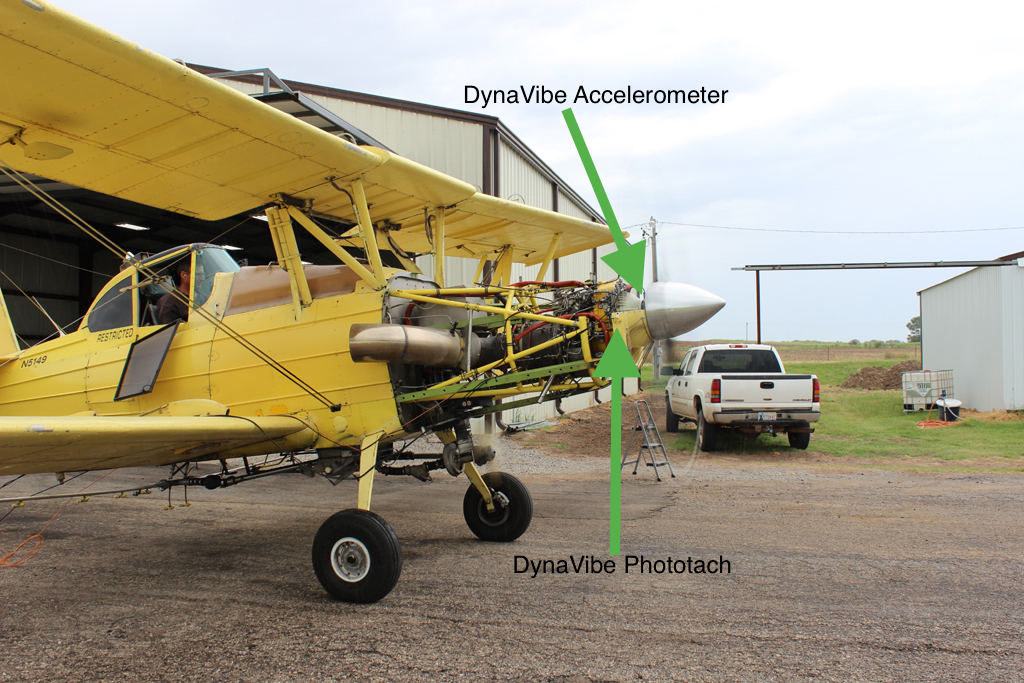
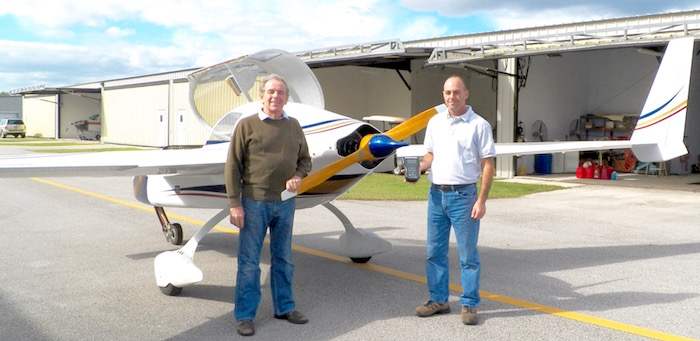
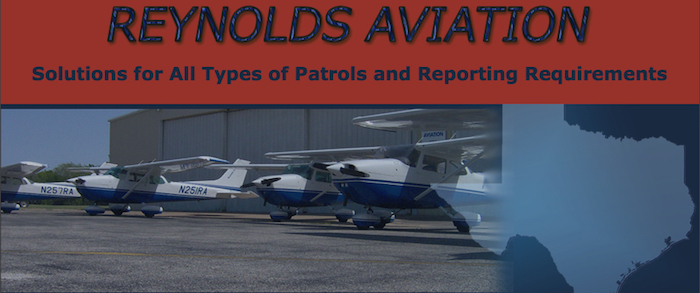
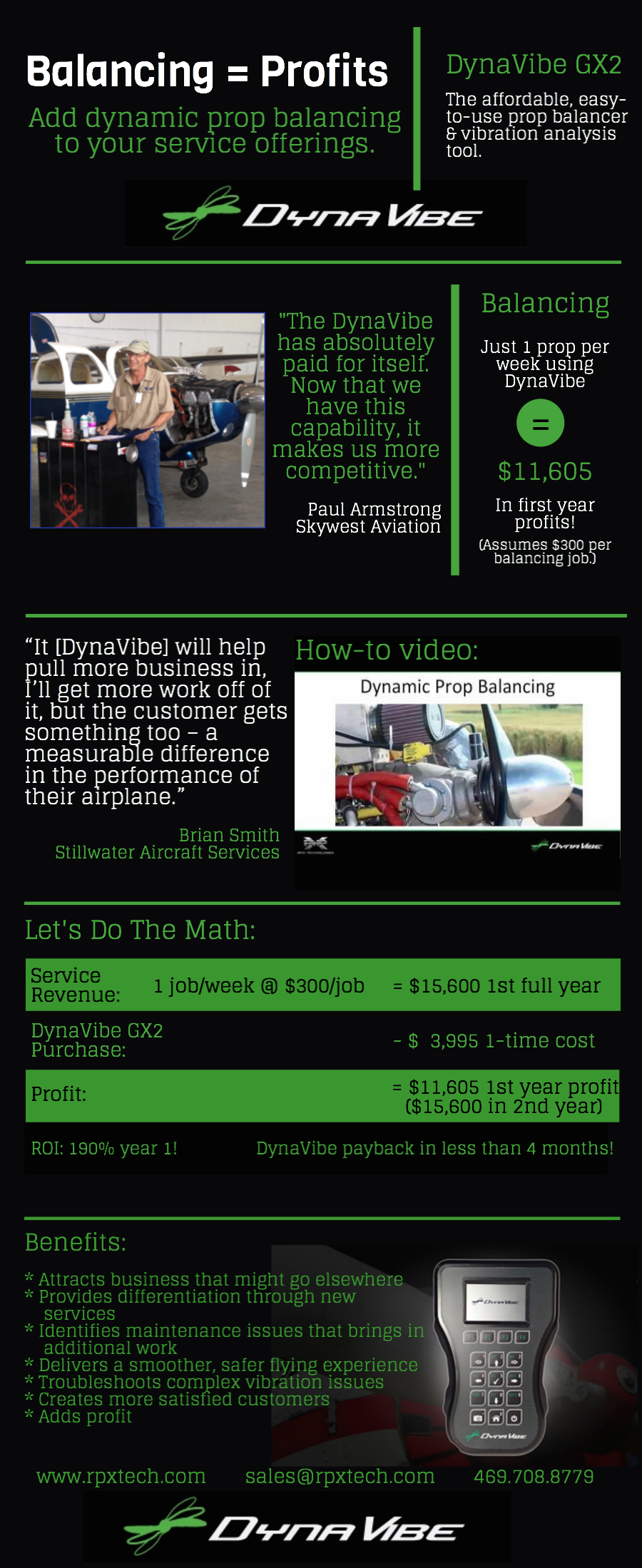
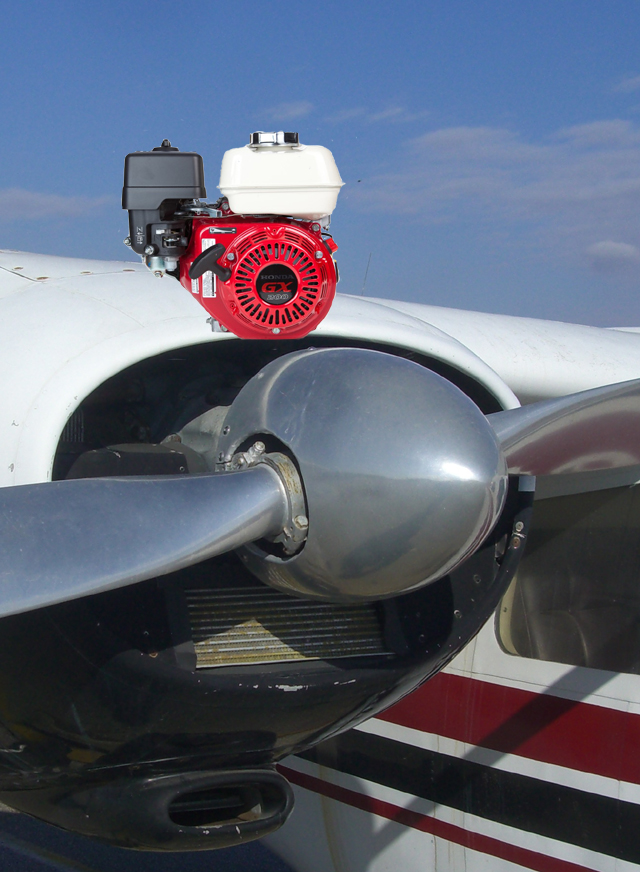
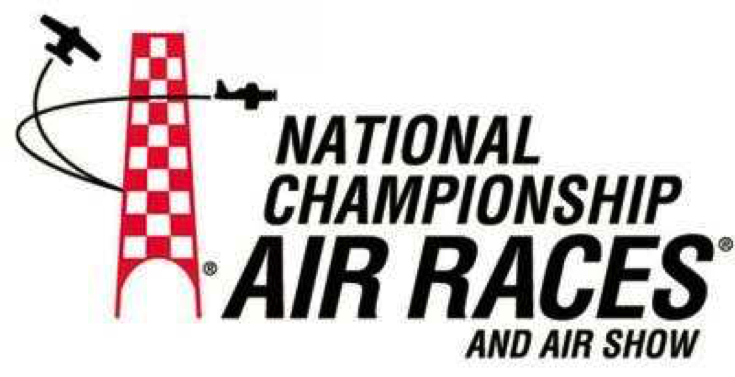
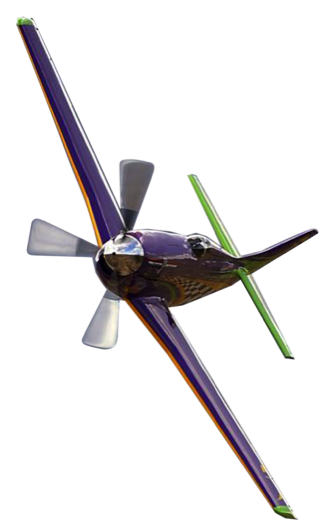
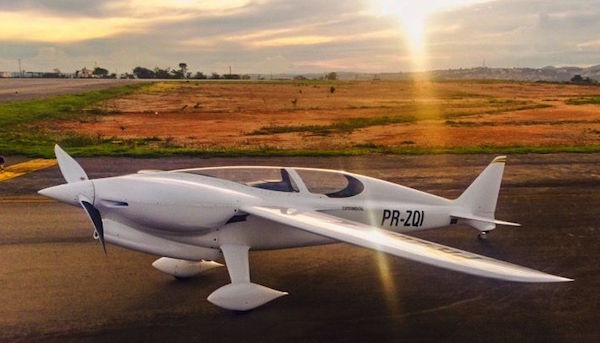
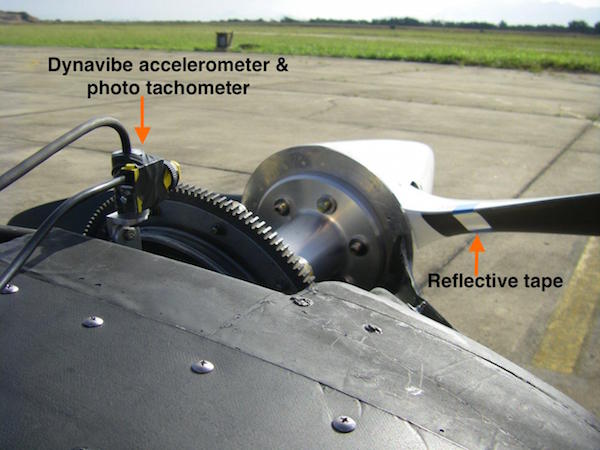
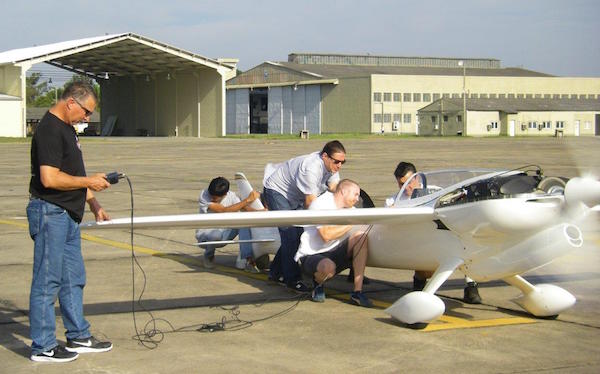
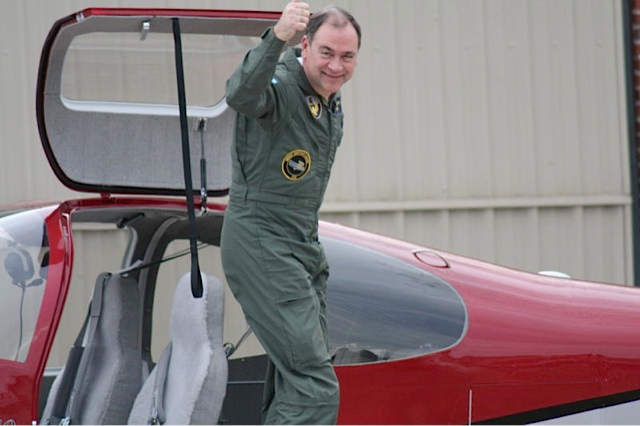
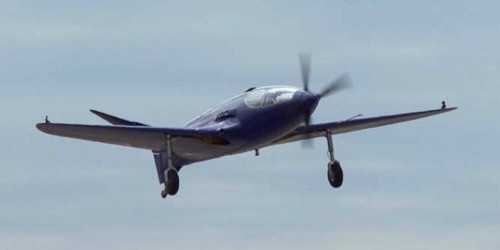
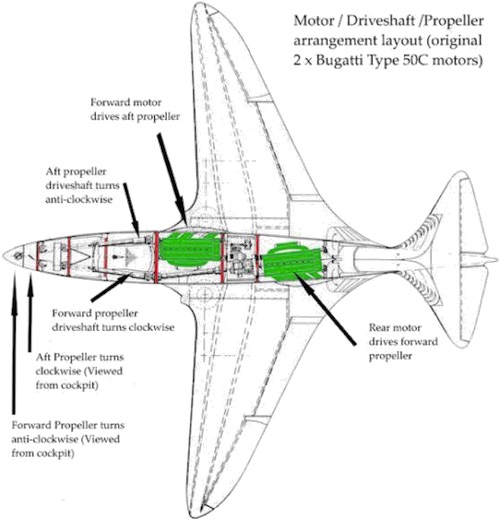
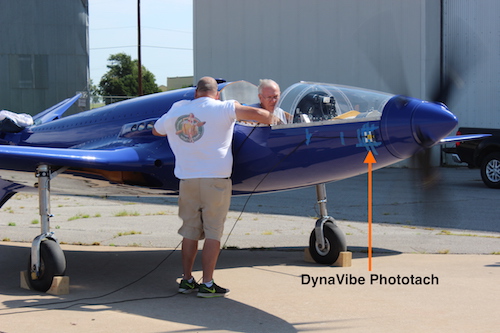
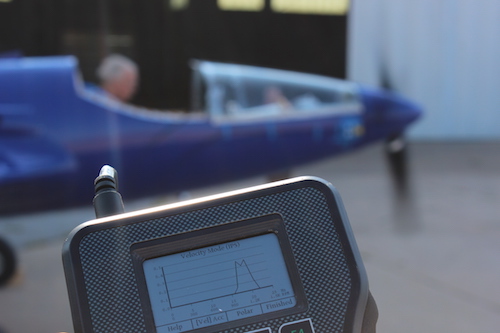
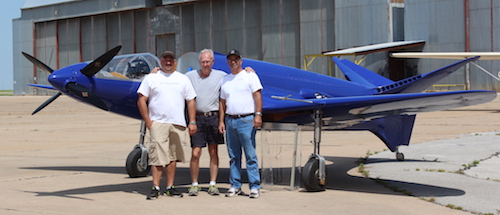
 RSS Feed
RSS Feed


